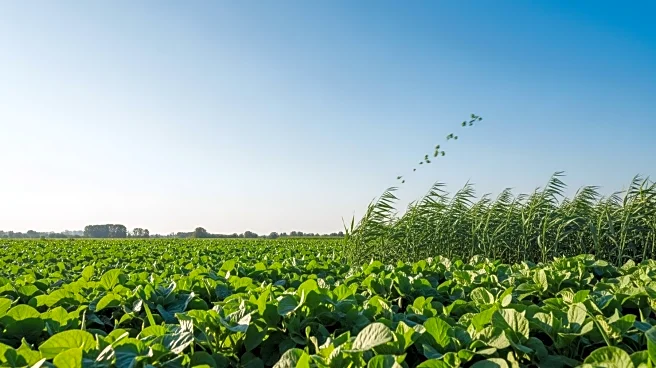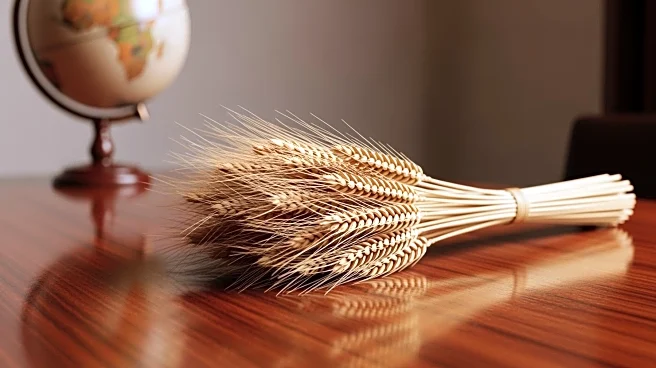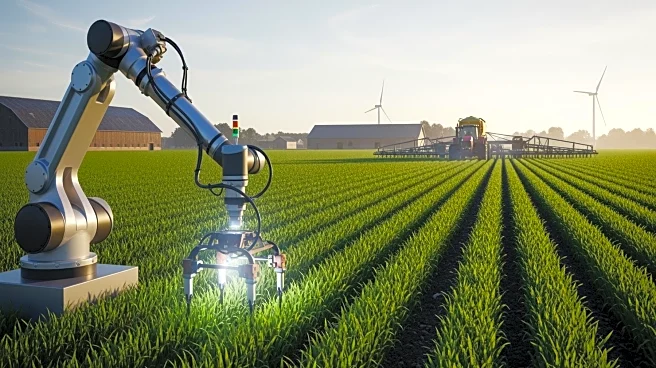What's Happening?
World Bank President Ajay Banga has announced plans to replicate Uttar Pradesh's resilient agriculture model globally. Speaking at the World Bank Agri Connect event during the 2025 Annual Meetings, Banga highlighted
the state's successful integration of foundations, cooperatives, and digital connections in agriculture. He emphasized the importance of making agriculture a driver of jobs, income, and food security at scale. Banga outlined the foundational elements necessary for this model, including policy and infrastructure improvements, land-tenure clarity, and efficient irrigation systems. He praised the use of digital tools, such as AI on mobile phones, to diagnose crop diseases, inform fertilizer choices, and facilitate secure payments.
Why It's Important?
The World Bank's decision to replicate Uttar Pradesh's agricultural model globally signifies a major step towards addressing global agricultural challenges. This model provides a framework for enhancing productivity, resilience, and financial inclusion for smallholder farmers. By focusing on digital integration and cooperative efforts, the model aims to improve farmers' access to resources, credit, and markets, ultimately increasing their incomes and food security. The initiative aligns with the World Bank's mission to create jobs and drive economic growth, particularly in developing countries where agriculture plays a crucial role in livelihoods.
What's Next?
The World Bank has set a target to double its agribusiness commitments to $9 billion annually by 2030, aiming to mobilize an additional $5 billion. This effort will focus on replicating successful agricultural models like Uttar Pradesh's to enhance global food security and economic development. The initiative will require collaboration between governments, businesses, and development partners to ensure its success. Over the next 10-15 years, the World Bank aims to address the employment gap for young people in developing countries by creating opportunities in agriculture and related sectors.











